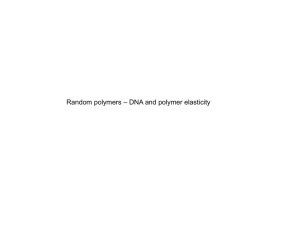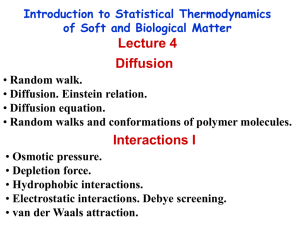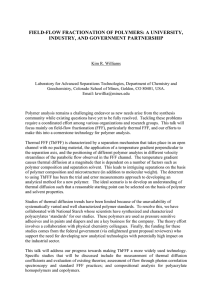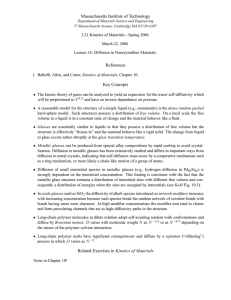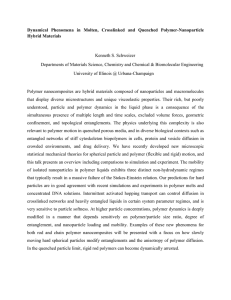(1)
advertisement
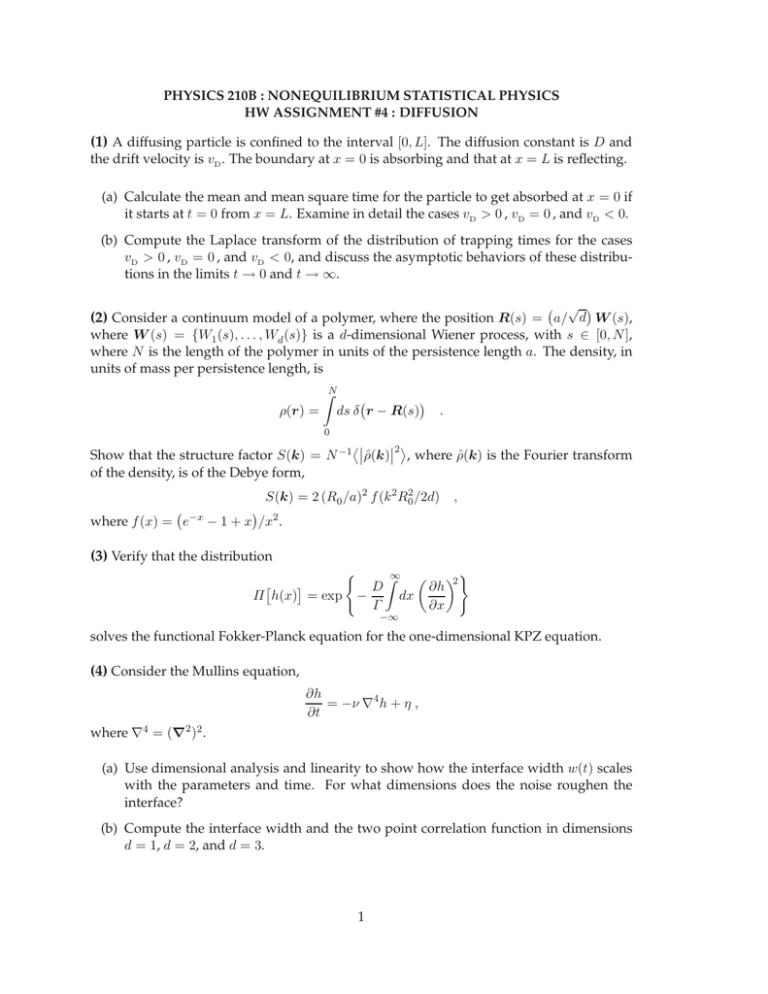
PHYSICS 210B : NONEQUILIBRIUM STATISTICAL PHYSICS
HW ASSIGNMENT #4 : DIFFUSION
(1) A diffusing particle is confined to the interval [0, L]. The diffusion constant is D and
the drift velocity is vD . The boundary at x = 0 is absorbing and that at x = L is reflecting.
(a) Calculate the mean and mean square time for the particle to get absorbed at x = 0 if
it starts at t = 0 from x = L. Examine in detail the cases vD > 0 , vD = 0 , and vD < 0.
(b) Compute the Laplace transform of the distribution of trapping times for the cases
vD > 0 , vD = 0 , and vD < 0, and discuss the asymptotic behaviors of these distributions in the limits t → 0 and t → ∞.
√ (2) Consider a continuum model of a polymer, where the position R(s) = a/ d W (s),
where W (s) = {W1 (s), . . . , Wd (s)} is a d-dimensional Wiener process, with s ∈ [0, N ],
where N is the length of the polymer in units of the persistence length a. The density, in
units of mass per persistence length, is
ρ(r) =
ZN
0
ds δ r − R(s)
.
2 Show that the structure factor S(k) = N −1 ρ̂(k) , where ρ̂(k) is the Fourier transform
of the density, is of the Debye form,
S(k) = 2 (R0 /a)2 f (k2 R02 /2d)
,
where f (x) = e−x − 1 + x /x2 .
(3) Verify that the distribution
Π h(x) = exp
(
D
−
Γ
Z∞ 2 )
∂h
dx
∂x
−∞
solves the functional Fokker-Planck equation for the one-dimensional KPZ equation.
(4) Consider the Mullins equation,
∂h
= −ν ∇4 h + η ,
∂t
where ∇4 = (∇2 )2 .
(a) Use dimensional analysis and linearity to show how the interface width w(t) scales
with the parameters and time. For what dimensions does the noise roughen the
interface?
(b) Compute the interface width and the two point correlation function in dimensions
d = 1, d = 2, and d = 3.
1
